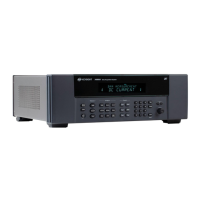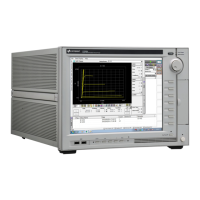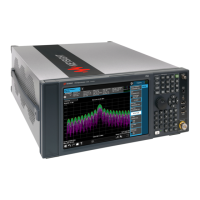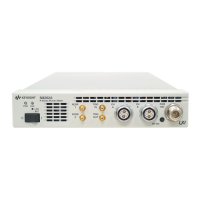24 Keysight 34921A-34925A User’s Guide
34922A 70-Channel Armature Multiplexer
The high-density 34922A 70-Channel Armature Multiplexer (70-Ch Arm MUX) is
divided into two banks with 35 latching armature switches (channels 1-35 and
36-70) in each. This module also contains eight armature Analog Bus relays
(channels 911-914 and 921-924), four on each bank that can connect the bank
relays to the system Analog Buses. Through ABus1 and ABus2 you can connect
any of the channels to the internal DMM for voltage or resistance measurements.
Refer to the simplified schematic on page 25.
Using program commands or the mainframe front panel, you can control each of
the channel switches individually, and thus configure the 34922A in these modes:
– two independent 35-channel 2-wire MUXes. This configuration requires
neither using external wiring nor connecting through the internal Analog
Buses.
– one 35-channel 4-wire MUX. This configuration requires neither using external
wiring nor connecting through the internal Analog Buses. For 4-wire resistance
measurements, the instrument automatically pairs channel n on Bank 1
(source) with channel n+35 on Bank 2 (sense) to provide these connections.
Four-wire controls occur only when doing 4-wire measurement operations
through the internal DMM, such as MEASure:FRESistance? or scanning a
channel previously configured as 4-wire.
– one 70-channel 2-wire MUX. You must use external wiring or connect through
the internal Analog Bus relays for this configuration. For example, closing
Analog Bus channels 913 and 923 connects Bank 1 and Bank 2 through
ABus3. Or, externally you can connect COM1 to COM2 to create this
configuration.
This module has capability to scan as many as 100 channels/second using the
internal DMM. With the automatic “break-before-make” connection operation,
you are assured that no two signals are connected to each other during a scan.
When using the module in a non-scanning mode, you can close as many channels
as you wish.
This module is interlock protected, which means whenever the D-sub connector
end of the modules is exposed, the Analog Bus relays automatically open and
disconnect from the Analog Bus. For more information, see “Safety Interlock” on
page 11 and “34922A D-Sub Connectors” on page 26.
When the power is off, all channel relays maintain state, and the Analog Bus
relays open.

